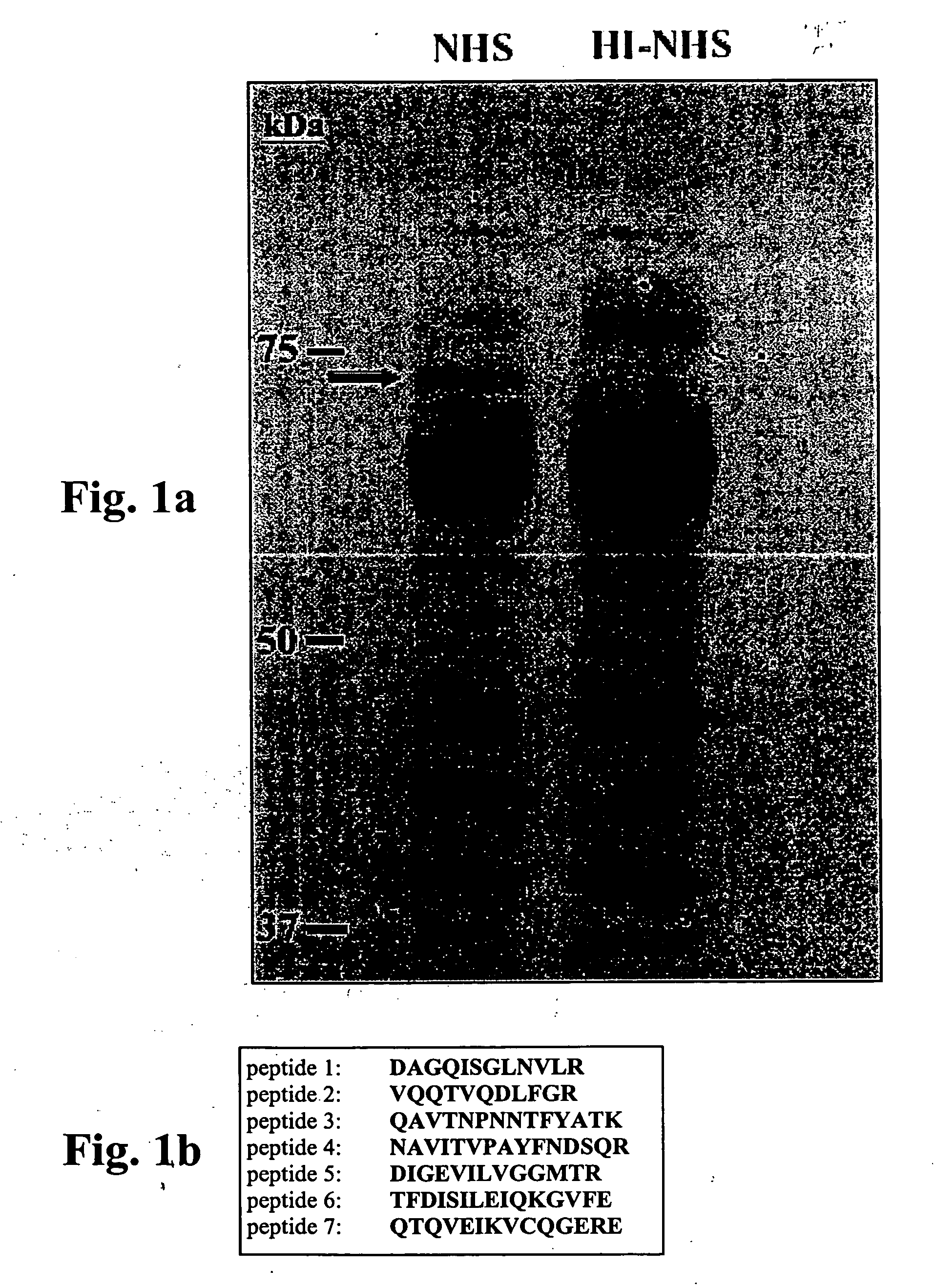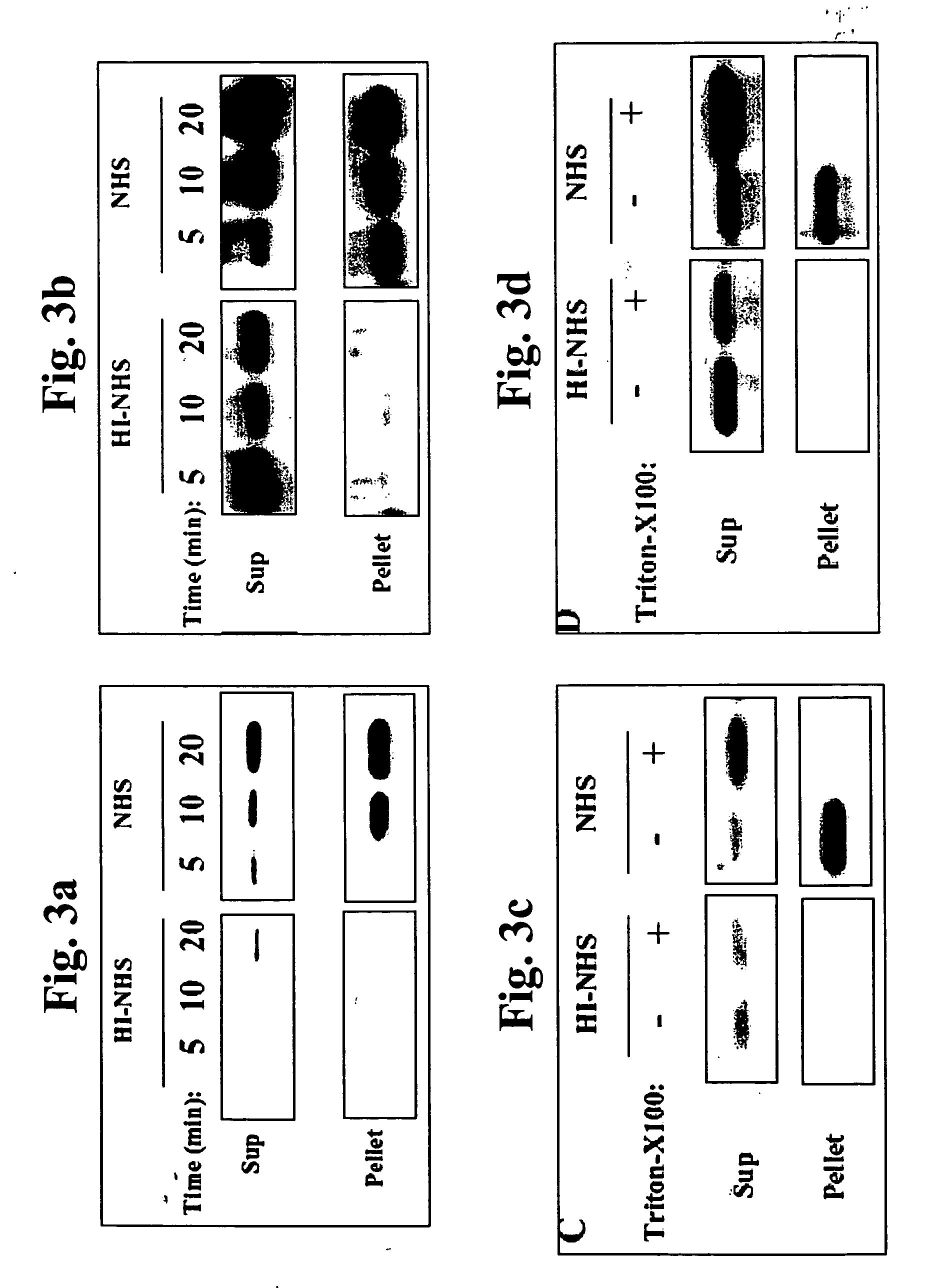Article of manufacture and method for disease treatment
a technology of disease and manufacture method, applied in the direction of anti-antibody ingredients, sugar derivatives, pharmaceutical non-active ingredients, etc., can solve the problems of ineffective lysis of tumor cells by homologous complement, debilitating and/or lethal, and the capacity of cells to shed ma
- Summary
- Abstract
- Description
- Claims
- Application Information
AI Technical Summary
Benefits of technology
Problems solved by technology
Method used
Image
Examples
example 1
Effective Modulation of Complement-mediated Cytolysis via Regulation of Mortalin Activity / Levels: Novel and Optimal Disease Treatment Method
[0252] Introduction: Diseases associated with pathological complement-mediated cytotoxicity, such as autoimmune, immune-complex and transplantation-related diseases represent numerous highly debilitating and / or lethal diseases for which no optimal therapy exists. Similarly, diseases associated with pathological cells, such as tumoral, infectious, autoimmune and transplantation-related diseases, which are amenable to treatment via complement-mediated cytolysis of such pathological cells, also represent numerous highly debilitating and / or lethal diseases for which no optimal therapy exists. Complement-mediated cytotoxicity has been suggested to be regulated by proteins of the 70 kDa heat-shock protein (HSP70) family, and, as such, an optimal strategy for treating the aforementioned diseases may be via appropriate regulation of activity / levels of ...
PUM
| Property | Measurement | Unit |
|---|---|---|
| concentration | aaaaa | aaaaa |
| concentration | aaaaa | aaaaa |
| concentration | aaaaa | aaaaa |
Abstract
Description
Claims
Application Information
 Login to View More
Login to View More - R&D
- Intellectual Property
- Life Sciences
- Materials
- Tech Scout
- Unparalleled Data Quality
- Higher Quality Content
- 60% Fewer Hallucinations
Browse by: Latest US Patents, China's latest patents, Technical Efficacy Thesaurus, Application Domain, Technology Topic, Popular Technical Reports.
© 2025 PatSnap. All rights reserved.Legal|Privacy policy|Modern Slavery Act Transparency Statement|Sitemap|About US| Contact US: help@patsnap.com



